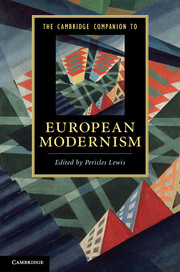9 - Spain
from PART II - PERIPHERAL MODERNISMS
Published online by Cambridge University Press: 28 September 2011
Summary
That Spanish literature of the early twentieth century should be considered an integral part of the wider phenomenon of European modernism is a position that Spanish criticism has begun to embrace only in the last ten to fifteen years. There are many reasons for this reluctance to organize within a modernist paradigm what is generally regarded as the most important moment of Spanish literary production since the “Golden Age” of the sixteenth and seventeenth centuries - called by some a “Silver Age.” Before entering into a discussion of Spain's contributions to a trans-European, indeed, global phenomenon, it will be instructive to examine briefly some of the factors within Spanish criticism that have slowed the more widespread acknowledgment of the existence of a full-fledged Spanish participation in modernism. A principal factor is the continuing tendency in continental critical circles to draw a rather sharp distinction between the notion of a progressive historical "avant-garde" and a somewhat negative and limited view of a reactionary "modernism." In this view, modernism is a rightist phenomenon whose products originate in an alienated, private, withdrawn perspective inimical to the avant-garde's more public goals and its institutional criticism of bourgeois art. It is ironic that this and similar positions have emerged on the continent at precisely the moment when the concept of modernism begins to be applied to a much greater circle of literary production, one that today includes nearly all of Europe, the United States, and much of the Third World, a prominent part of which is Latin America. Just where Spanish peninsular writing fits into this larger scheme has remained a topic that Spanish criticism has been reluctant to explore.
Information
- Type
- Chapter
- Information
- The Cambridge Companion to European Modernism , pp. 151 - 169Publisher: Cambridge University PressPrint publication year: 2011
Accessibility standard: Unknown
- 1
- Cited by
